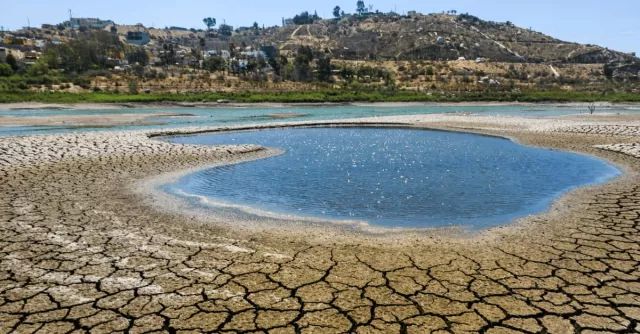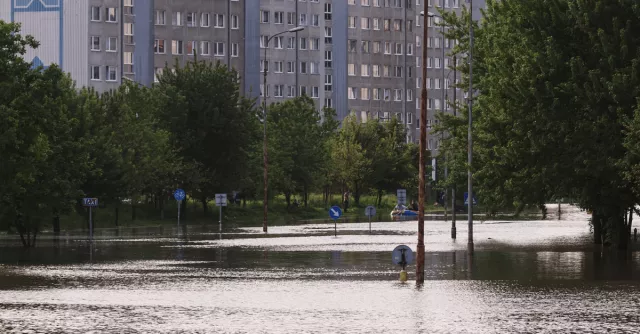Peak Hurricane Season: 9 Tactical Steps to Preparedness

According to NOAA, the official hurricane season for the Atlantic Basin (the Atlantic Ocean, the Caribbean Sea, and the Gulf of Mexico) is from 1 June to 30 November. The peak of the season is from mid-August to late October. However, deadly hurricanes can occur anytime in hurricane season.
We all know that practice makes perfect, especially when it comes to disaster preparedness and recovery. Because all business interruptions are unique, each crisis situation can offer lessons to help your organization build resilience and maintain critical functions.
In our previously published blog posts, we discussed some of the steps a business needs to take to protect its people and operations. When preparing your organization for any potential impact from a hurricane, consider answering the following questions.
1. Assess Risks to Critical Functions
-
We are good at assessing short-term disruptions, but how do you manage through long-term interruptions?
-
Who are your “key players” — if your #1 person is not available, do you have someone trained to be the backup?
2. Back Up Data Properly
-
Do you have remote, cloud access to data?
-
How often is data being backed up to a secure location, outside of the impact region, ideally
-
Communication plan to get access to the data from 3rd party
-
Test this and assess gaps on a timely basis
-
Obstacle: access to data through bandwidth restrictions
3. Have a Plan to Restore Power
-
Have a plan to get a generator on-site if you do not already have one
-
What is the strategy for recovering critical employees who are working from home - is there a central location they should recover to, and can you bring power to an alternate location?
-
Fuel access for generators: Where will it be located? Are there proper/appropriate connections? Do you need to hire a third-party electrician to get this installed? Plan ahead for this, as there is typically high demand and short supply during a disaster.
4. Prepare Your Supply Chain
-
Identify the top critical providers and how you communicate with providers during a crisis. Is it built into the crisis comms plan?
-
Are they getting notified during the critical event? Needs to be a 2-way line of communication. Not just them giving us updates.
-
Document this strategy, and test it regularly
5. Activate Your Crisis Communications Plan
-
Weaker point for many organizations, crisis comms is often overlooked
-
Having a plan in place and following the script is critical!
-
Think about the cadence of when to notify, who you are going to notify (employees + customers)
-
Crisis comms is internal and external — are your people confident in the strategy
-
Test this regularly to make sure you have the correct contact information, and everyone who needs to receive comms is, in fact, receiving that message
-
Cadence should look something like this: “This is what we’re going to do, this is what we’re doing, this is what we did, and this is what we’re going to do”
-
Effective tools do “more than messaging”
-
Bi-directional communication with employees (email, text, phone, push, etc.)
-
Store critical documents, plans, training, resources, etc.
-
Social media is important in keeping your network up to date
6. Re-Supply Emergency Kits
-
Identify and communicate with the organization - determine who is responsible for each item on the list, and be clear
-
People will assume someone else is in charge if you do not define clear expectations
7. Review Insurance Coverage
-
Don’t wait until the storm is imminent!
-
Make sure your insurance pays for out-of-pocket expenses related to storms
-
What are your insurance deductibles?
-
Communicate with your insurance provider before, during, and after a storm
-
Keep photos of your building, equipment lists, and policy info stored in a secure and safe offsite location
8. Consider an Alternate Location
-
What do you do when you have two disasters - a pandemic + hurricane?
-
How are we going to “reverse engineer” testing, plans, etc?
-
How can you provide your people with a safe environment and everything they need to continue working (social distancing, power, technology, equipment, etc.)?
-
Work from home - the right strategy for a pandemic but not the right strategy for a hurricane
-
Work from home is a part of the strategy, but it is not the entire strategy
-
Single-site recovery concerns: Be cautious about requiring employees to travel too far to get to an alternate site (what is the acceptable distance? What is the budget/cost to the company? And who is willing to travel?).
9. Prepare & Train Employees
-
Test!! Make sure there is a plan, everyone understands their roles and expectations (cross-train), and follows that plan. But be flexible if that plan changes.
-
Ensure your people and their families have an evacuation/shelter plan, emergency supply kits, etc.
Conclusion
Readiness is the cornerstone of resilience in the face of hurricanes. By implementing these nine tactical steps, businesses can fortify their operations and safeguard their people against the destructive forces of peak hurricane season. From assessing risks to training employees, each measure contributes to a comprehensive strategy for preparedness. Let's strive not only to weather the storm, but to emerge stronger and more resilient on the other side.


